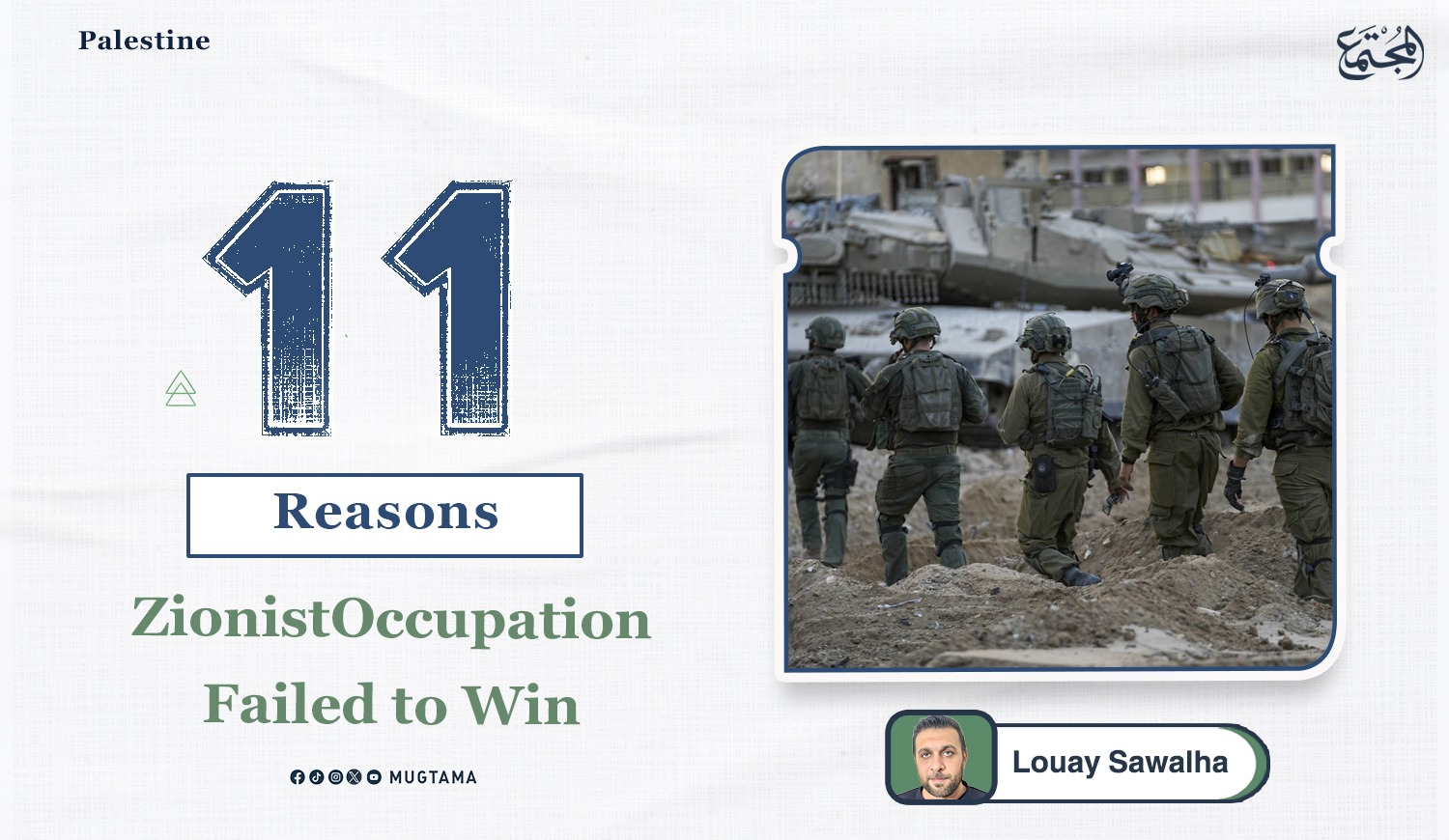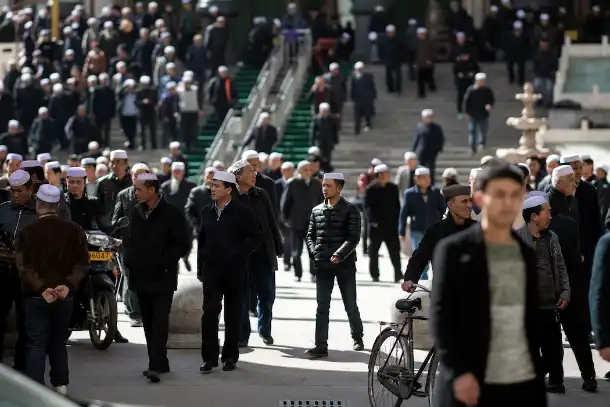A look into the essence of the “Israeli” defeat
11 Reasons Why Zionist Occupation Failed to Win

Since
October 7, when the Palestinian resistance surprised the world with the “Al-Aqsa Flood” operation, the
question was no longer about who possesses military power, but rather the
greater question became: who possesses the ability to achieve victory?
This
war has clearly revealed that technological superiority and large troop numbers
do not guarantee a decisive outcome, and that possessing aircraft, tanks, and
missiles does not mean victory if the will and self-confidence are lost.
“Israel,” a state built upon absolute fear and security, has found itself
unable to impose its will on the besieged Gaza Strip—exposing the fragility of
its entire settler-colonial project.
First: The fall of the myth of the
“invincible army.”
The
“Israeli” army has long been regarded as a symbol of strength and
professionalism, but in Gaza, it collided with an unexpected wall of
resilience. Since the beginning of the battle, the resistance has managed to
carry out strategic breaches along the border lines, while advanced defense
systems such as the “Iron Dome” failed against precise rockets. Direct strikes
on military bases and settlements caused a major shock both inside and outside
“Israel.”
The
first lesson is that technology alone does not bring victory. Technology
without a clear strategy, high morale, and genuine knowledge of the terrain
becomes nothing more than useless tools. The Palestinian resistance has proven that it
understands the land, knows how to exploit its terrain, and skillfully combines
tactics with innovation—turning every strike into a force multiplier.
Second: The collapse of the “Israeli”
combat doctrine.
The
“Israeli” combat doctrine has relied since its founding on the concepts of
deterrence and swift decisive action; the aim of every operation was to achieve
an immediate victory before the army, economy, and society could be drained.
But
in Gaza, the battle turned into a long war of attrition in which the army
failed to seize the initiative and found itself in a constant defensive
posture, merely reacting to the resistance’s strikes instead of dictating the
course of the battle.
This
shift in the army’s role—from attacker to defender—directly affected the morale
of both soldiers and leadership. Every military operation was met with an
unexpected response from the resistance fighters, leading to a loss of control
over events on the ground.
Third: The absence of clear strategic
objectives.
One
of the main reasons behind the “Israeli” failure is the lack of a clear and
genuine objective. Slogans such as eliminating “Hamas,” freeing the captives,
and disarming Gaza were never achievable, as “Hamas” is not a conventional army
but an integrated social and political system whose presence is deeply rooted
within the social and economic fabric.
As
for the release of captives, it has become more of a bargaining chip than a
military objective. The absence of a clear goal led to scattered military
operations, ineffective strategic planning, and the transformation of the
battle into a series of raids without achieving any decisive outcome.
Fourth: The psychological fragility of
“Israeli” society.
“Israeli”
society, built on the principle of security above all else, suffered a major
psychological shock from the very first day of the attack. Waves of panic and
flight swept through the border areas, while demonstrations began calling on
the government to end the war and bring back the captives at any cost. Public
trust in the army was no longer what it once was, which affected soldiers’
morale. The “Israeli” public started pressuring its political leadership for a
quick achievement, deepening the gap between military strategy and the reality
on the ground.
Fifth: The evolution of the Palestinian
resistance into a fully developed school of warfare.
The
resistance no longer relies on sheer numbers alone but on tactical intelligence
and continuous innovation. Tunnels are no longer merely channels of movement
but a comprehensive defensive and offensive system, and rockets are no longer
random — they are precise and strike into strategic depth, targeting vital
military sites and settlements.
The
resistance also managed a smart media war that amplified the impact of its
strikes on global public opinion, turning every confrontation into a moral
victory—even when a clear military triumph was not achieved.
Sixth: The “Israeli” political division.
Netanyahu’s
government faced a complex dilemma: balancing the internal pressure from the
far right with international demands for restraint.
The
army, in turn, became a tool in an internal political struggle, and the
independence of strategic decision-making declined. This division led to
contradictory decisions, delayed military operations, and left “Israel”
floundering between responding to public opinion, meeting international
obligations, and dealing with the pressure of its allies.
Seventh: The media and moral failure.
The
media sphere became a decisive battlefield—one in which “Israel” clearly
failed. Images of children, hospitals, and destroyed refugee camps deeply
impacted global public opinion, portraying a state attacking civilians under
the guise of self-defense.
Meanwhile,
the resistance used media intelligently, exposing the contradiction between
rhetoric and reality, which strengthened its position on the international
stage.
Eighth: International retreat and the
loss of political cover.
For
the first time in decades, the United States began setting clear limits on the
bombing operations, and Congress warned against the continued funding of the
war. Several European countries started discussing recognition of the
Palestinian state, while human rights organizations described what was
happening as genocide. This deepened “Israel’s” international isolation and
forced it to reconsider its military and political options.
Ninth: The economic crisis.
The
war directly impacted the “Israeli” economy in several ways:
- Major technology
companies halted operations entirely.
- The costs of
recruitment and military attrition soared.
- Foreign investments
fled the country.
- Public debt
increased.
These
economic pressures heightened internal tensions and weakened “Israel’s” ability
to sustain the war without jeopardizing its internal stability.
Tenth: The strengthened Palestinian
unity.
The
war restored cohesion among the West Bank, Gaza, Jerusalem, and Palestinian communities inside the 1948
territories, shattering “Israel’s” long-standing bet on division. The
resistance emerged as a unified force, and the Palestinian people once again
formed a single front that transcended traditional divisions—making it even
harder for “Israel” to achieve any of its objectives.
Eleventh: The “Israeli” identity crisis.
The
defeat exposes an existential crisis: “Israel” is a state built on occupation
and aggression, living more on fear than on security. The longer the conflict
continues, the clearer it becomes that it faces a people fighting not merely
for survival but for freedom — and that its settler-colonial project is
threatened by moral and political collapse.
The
occupation’s failure to resolve the war is not merely a military one, but a
comprehensive failure — political, psychological, moral, and economic.
Gaza
did not triumph through weapons alone, but through faith and steadfastness —
through the ability to turn weakness into strength and “Israeli” impotence into
a prolonged strategic defeat. History will record that “Israel” did not defeat
the Palestinians with its military might, but rather collapsed before the will
of a people determined to achieve freedom and dignity.
_______________________________________
You may also like:
Gaza Deal Crowns Palestinian Resilience and Breaks Israeli Arrogance
The Resistance’s Victory has Illuminated the Land
Rebuilding Gaza: 7 Facts from the Perspective of Steadfast Resistance
Tactics of resilience and defense: How did the Palestinian resistance respond to the genocide?
____________________________________










